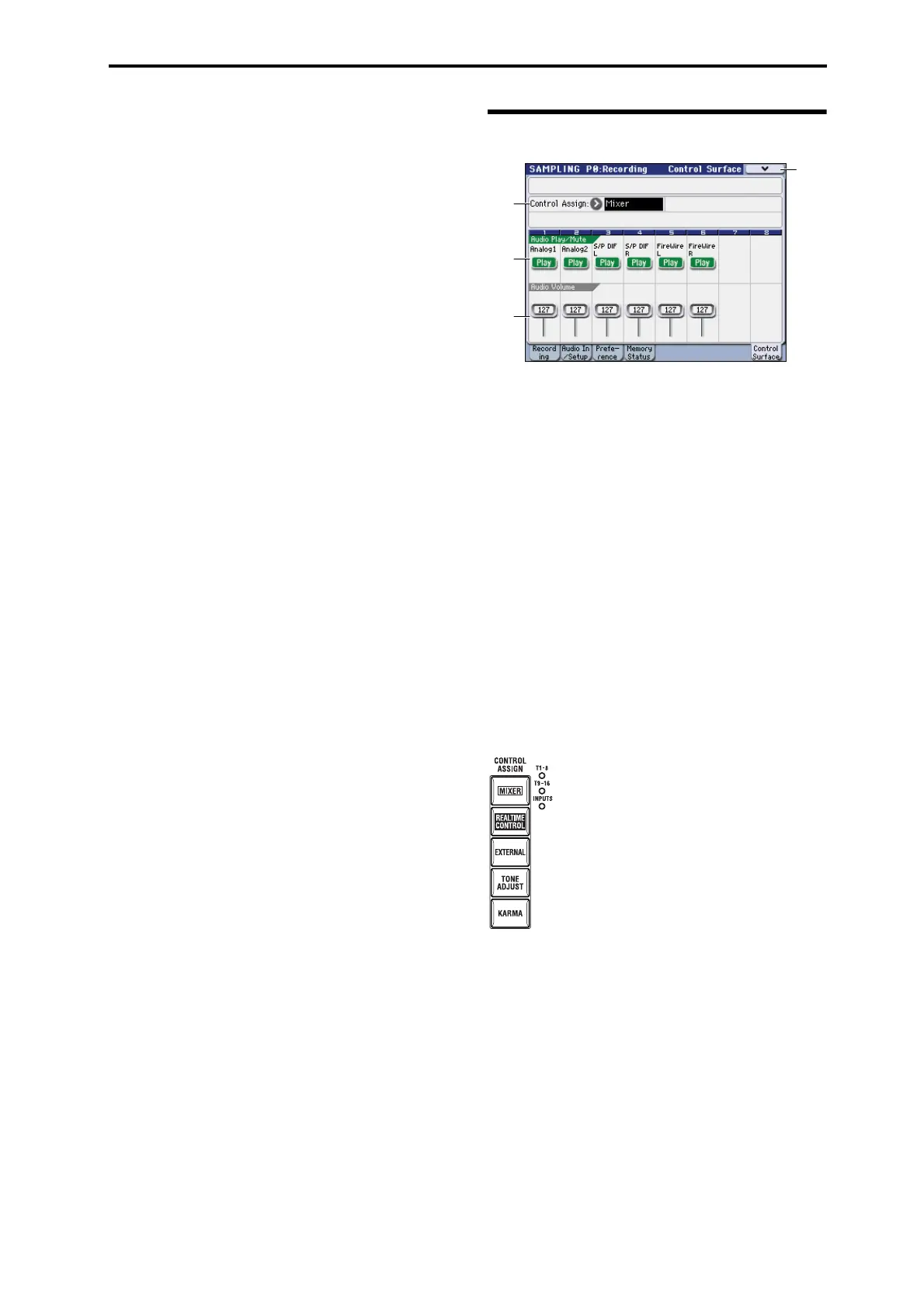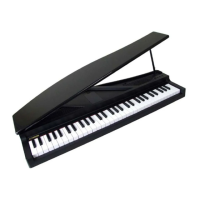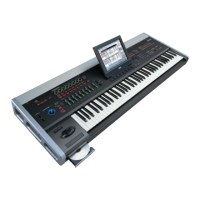Sampling P0: Recording 0–8: Control Surface
309
• 11: Convert MS To Program (Convert Multisample To
Program) ☞p.333
• 12: MS Mono To Stereo ☞p.333
• 12: MS Stereo To Mono ☞p.333
• 13: Optimize RAM ☞p.334
• 14: Select Directory ☞p.334
• 15: Keyboard Display ☞p.334
• 16: Auto Sampling Setup ☞p.334
For more information, please see “Sampling: Menu
Command” on page 329.
0–8: Control Surface
The control surface refers to the eight sliders and eight
switches located on the panel at the left of the display. In
addition to normal mixer operation, you can use these in a
variety of ways such as editing sounds, operating KARMA,
or sending MIDI messages to external devices.
This page shows you the current values for each of the
sliders, and switches, along with information about what
they are controlling. For instance, you can:
• Adjust the volume of the oscillators (multisamples), and
the audio input levels
• Modulate sounds and effects using the sliders and
switches
• Use the sliders and switches to control external MIDI
devices.
CONTROL ASSIGN switches and parameters
You can use Control Assign in the display or the CONTROL
ASSIGN switches of the front panel to switch the function of
control surface. Since the display and the front panel
switches are linked, changing one will change the other
correspondingly.
Control Assign switches
In Sampling mode, you can select one of four different
functions:
MIXER (Mixer): Adjust the volume of the oscillators
(multisamples), and switch the Play/Mute and Solo On/Off
status.
MIXER (Mixer Input): The control surface will control the
audio input volume, Play/Mute, and Solo On/Off status of
the analog inputs, S/P DIF inputs, and FireWire inputs (if
the EXB-FW is installed).
REALTIME CONTROL (RT Control): Use the sliders to
control the sound or effects. Use the switches to turn effects
on/off.
EXTERNAL: Lets you send MIDI messages to external MIDI
devices. Use the Global P1: MIDI– External Mode 1/2 page
to specify the MIDI message that will be transmitted.
0–8a
0–8b
0–8c
0–8
Menu

